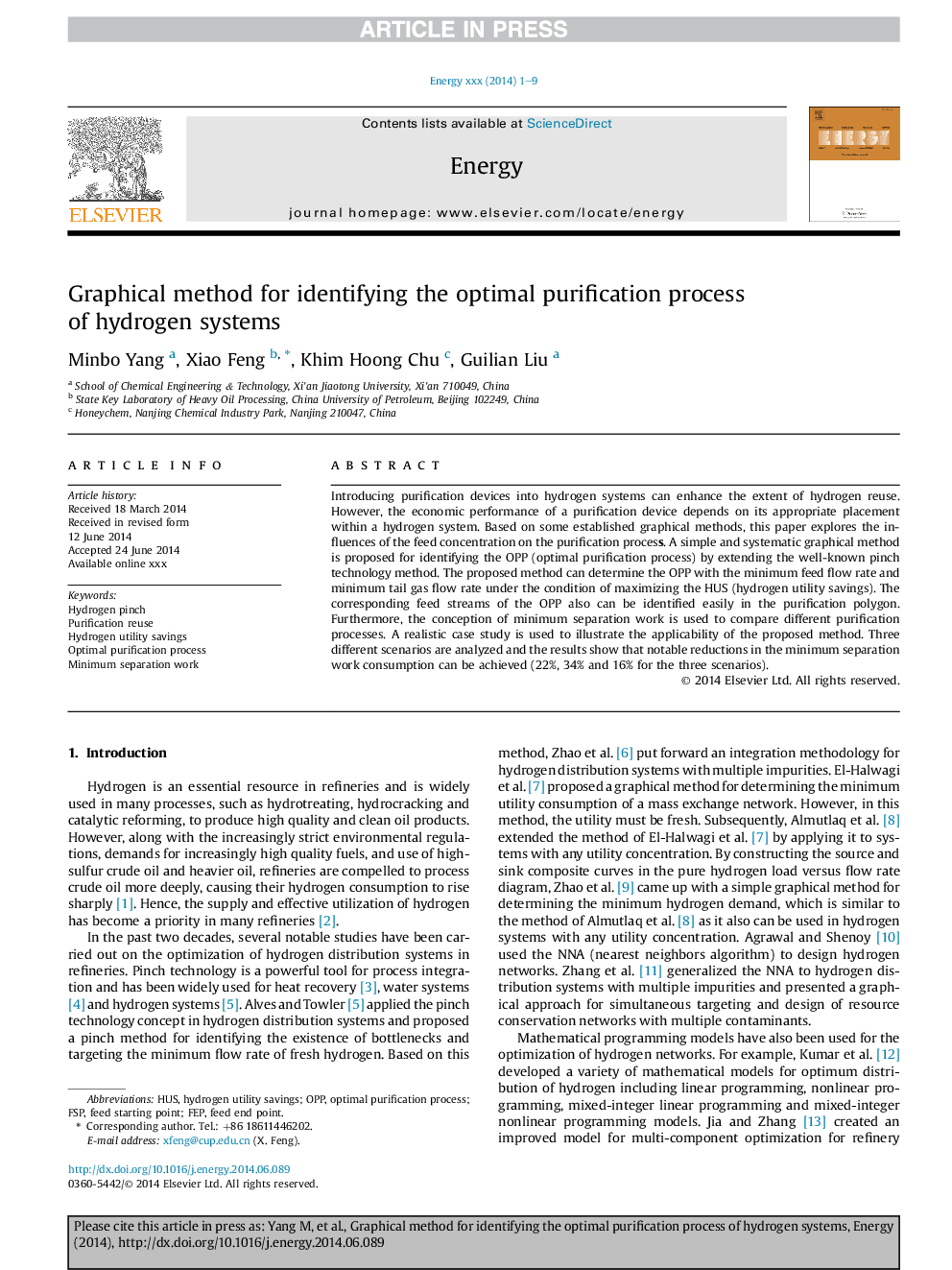| Article ID | Journal | Published Year | Pages | File Type |
|---|---|---|---|---|
| 8077150 | Energy | 2014 | 9 Pages |
Abstract
Introducing purification devices into hydrogen systems can enhance the extent of hydrogen reuse. However, the economic performance of a purification device depends on its appropriate placement within a hydrogen system. Based on some established graphical methods, this paper explores the influences of the feed concentration on the purification process. A simple and systematic graphical method is proposed for identifying the OPP (optimal purification process) by extending the well-known pinch technology method. The proposed method can determine the OPP with the minimum feed flow rate and minimum tail gas flow rate under the condition of maximizing the HUS (hydrogen utility savings). The corresponding feed streams of the OPP also can be identified easily in the purification polygon. Furthermore, the conception of minimum separation work is used to compare different purification processes. A realistic case study is used to illustrate the applicability of the proposed method. Three different scenarios are analyzed and the results show that notable reductions in the minimum separation work consumption can be achieved (22%, 34% and 16% for the three scenarios).
Related Topics
Physical Sciences and Engineering
Energy
Energy (General)
Authors
Minbo Yang, Xiao Feng, Khim Hoong Chu, Guilian Liu,
